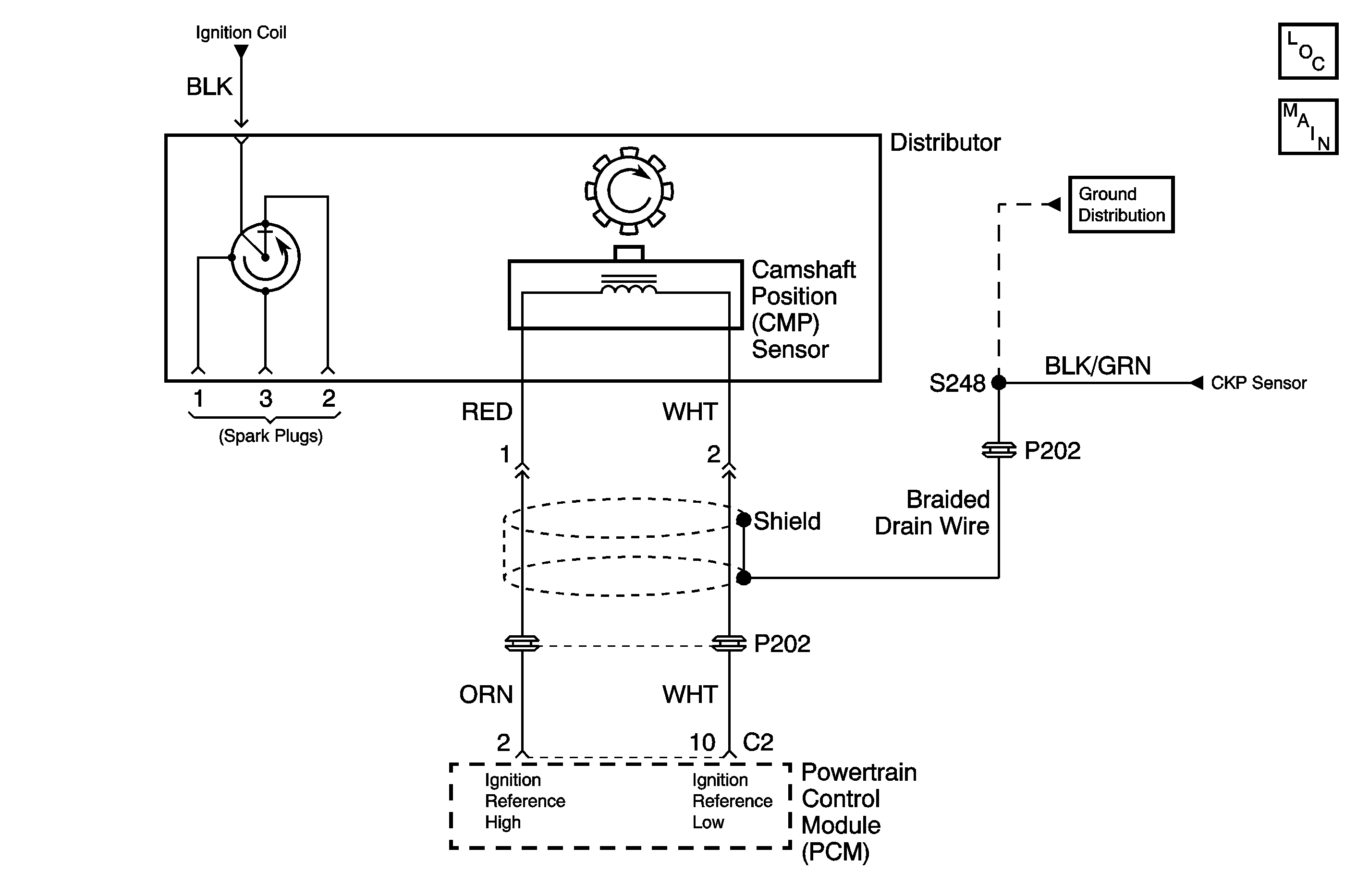
Circuit Description
The throttle position (TP) sensor contains a potentiometer whose resistance value changes with the changes in throttle valve position. The powertrain control module (PCM) provides a 5 volt reference voltage to the TP sensor. The PCM reads the voltage across the TP sensor and converts the voltage into a throttle angle. The TP sensor resistance decreases as the throttle valve opening increases, and the TP sensor resistance increases as the throttle valve opening decreases. The TP sensor voltage being monitored by the PCM will increase as the throttle valve opening increases.
Conditions for Running the DTC
| • | Engine coolant temperature is greater than 70°C (158°F). |
| • | Intake air temperature is between -10°C (14°F) and 50°C (122°F). |
| • | Barometric pressure greater than 75 kPa. |
| • | Engine speed is between 1,600 and 3,000 RPM. |
| • | Intake manifold pressure remains constant (change in MAP is less than 13 kPa / 16 firing events). |
Conditions for Setting the DTC
| • | The difference between the expected TP sensor angle and the actual input is greater than 20 degrees. |
| • | The above condition is present for at least 3 seconds. |
Action Taken When the DTC Sets
| • | The PCM illuminates the malfunction indicator lamp (MIL) after two consecutive ignition cycles in which the diagnostic runs with the fault active. |
| • | The PCM records the operating conditions at the time the diagnostic fails. This information is stored in the Freeze Frame buffer. |
Conditions for Clearing the MIL/DTC
| • | The MIL turns OFF after three consecutively passing trips without a fault present. |
| • | A History DTC clears after 40 consecutive warm-up cycles without a fault. |
| • | Use the scan tool Clear DTC Information function or disconnect the PCM battery feed in order to clear the DTC. |
Diagnostic Aids
Check for any of the following conditions:
| • | A misadjusted TP sensor or a binding or stuck throttle plate could cause a DTC P0121 to set. Refer to Throttle Position Sensor Adjustment . |
| • | Check the resistance of the TP sensor. TP sensor resistance between terminals 1 and 4 should be 2.87 ohms to 5.33k ohms. TP sensor resistance between terminals 1 and 3 should be 100 ohms to 20k ohms. Replace the TP sensor if the measured resistance is not within the specified values. Refer to Throttle Position Sensor Replacement . |
| • | A faulty electrical connection to the PCM. |
An intermittent malfunction may be caused by a fault in the TP sensor electrical circuit. Inspect the wiring harness and components for any of the following conditions:
| • | Backed out terminals. |
| • | Improper mating of terminals. |
| • | Broken electrical connector locks. |
| • | Improperly formed or damaged terminals. |
| • | Faulty terminal to wire connections. |
| • | Physical damage to the wiring harness. |
| • | A broken wire inside the insulation. |
| • | Corrosion of electrical connections, splices, or terminals. |
If a DTC P0121 cannot be duplicated, the information included in the Freeze Frame data can be useful in determining vehicle operating conditions when the DTC was first set.
Test Description
The numbers below refer to the step numbers in the Diagnostic Table.
-
The Powertrain OBD system check prompts the technician to complete some basic checks and store the freeze frame data on the scan tool if applicable. This creates an electronic copy of the data taken when the fault occurred. The information is then stored in the scan tool for later reference.
-
The vehicle must be at operating temperature and a feeler gauge of the specified size must be used.
-
This step checks the TP sensor signal circuit for a short or a open. This step also checks the TP sensor ground circuit for a open.
-
The TP sensor adjustment must be checked and set to specifications. Replace the TP sensor if the proper adjustments cannot be made. Refer to Throttle Position Sensor Adjustment and Throttle Position Sensor Replacement .
Step | Action | Value(s) | Yes | No | ||||||
|---|---|---|---|---|---|---|---|---|---|---|
Did you perform the Powertrain On-Board Diagnostic System Check? | -- | |||||||||
Is the TP sensor voltage within both specified values? | 0.2-1.0 volts with the feeler gauge. 2.8-4.8 volts at wide open throttle | Fault not Present-Go to Diagnostic Aids | ||||||||
3 |
Is the TP sensor voltage between the specified value? | 4-5 volts | ||||||||
4 | Measure the voltage from the TP sensor signal circuit to ground (harness side) using the DMM. Is the TP sensor signal circuit voltage within the specified value? | 4-5 volts | ||||||||
Was a repair necessary? | -- | |||||||||
6 |
Was a repair necessary? | -- | ||||||||
Adjust or replace the TP sensor. Refer to Throttle Position Sensor Adjustment and Throttle Position Sensor Replacement . Is the action complete? | -- | -- | ||||||||
8 | Replace the PCM. Refer to Powertrain Control Module Replacement . Is the action complete? | -- | -- | |||||||
9 |
Are any DTCs displayed on the scan tool? | -- | Go to the Applicable DTC Table | System OK |
